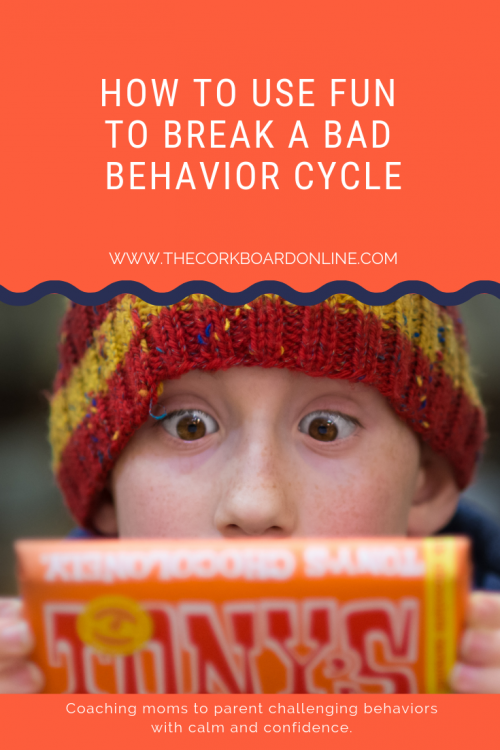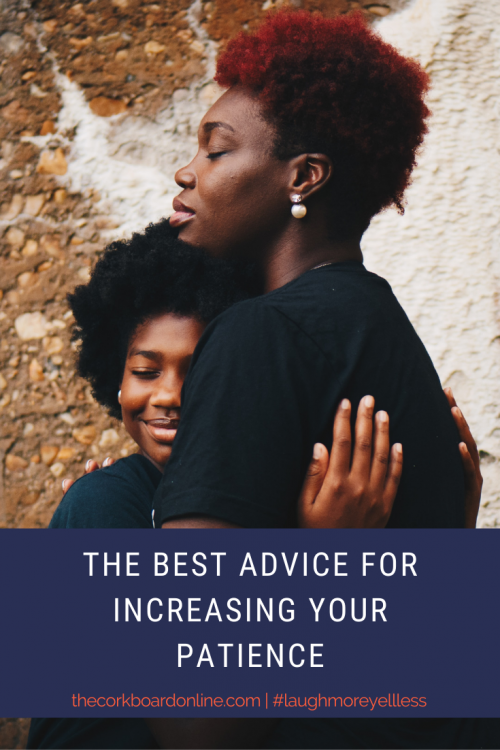Maybe it’s the transition to a new season (ex: back-to-school), and your child is throwing lots of tantrums.
Maybe it’s punishments creating more angry behaviors. You take away a privilege for lying, and your child retaliates by throwing something at you.
Sometimes we get in these bad behavior cycles with our kids where it seems like nothing we do is fixing the problem. Instead, the situation is escalating.
I specifically remember this happening right after Ty came home. We used every response we knew to address undesirable behaviors. Each time ended with him raging and me losing my cool. I hated the mom I was becoming and had no idea what to do.
My first instinct when a child’s behavior seems to be spiraling is to make more rules and gain more control. I’m all structure. This rarely works and usually ends up with a kid rebelling more.
What we have to remember is that if we’re going to up the structure, we have to up the nurture as well.
[bctt tweet=”What we have to remember is that if we’re going to up the structure, we have to up the nurture as well. #parenting” username=”corkboardblog”]
Understanding the “why” of his behaviors and approaching him with compassion instead of anger changed everything for us. It allowed us to tap into more nurturing strategies.
Every connected parenting tool we tried felt counterintuitive, but we started seeing hopeful changes in both of us.
One of the best ways to disrupt a negative behavior cycle is to restore trust. Our kids need to know that they can trust us to meet their needs.
Sometimes that need is for us to be a lighthouse when they get lost in the stormy seas of their big emotions. Or it might be understanding which part of their brain needs some TLC when they have a tricky behavior like lying, sneaking, or stealing.
One of the best ways to restore trust in a relationship is to give a joyful yes when a need is voiced appropriately. The more iterations of this ask-for-a-need-get-a-yes cycle that you can create, the greater the deposit in the trust bank.
Additionally, Bruce Perry says maturity is based on the number of positive social-emotional interactions. Giving a “yes” is a positive social-emotional interaction and will help move our child to maturity. Win-win!
This cycle is easy with babies and toddler because they have obvious needs that they can’t meet. But what about a bunch of know-it-all teens or independent kids who just DO or GET without asking?

Try the “Yes Game.”
What you need for the fun “Yes Game”
A place to keep score. (We have a whiteboard in our dining room. There are also tally apps for your phone.)
Motivating prize.
A chunk of time where you will be together (preferably at home) with minimal commitments and distractions.
How to play
Have a family meeting and announce that you are trying to find more ways to say “yes” to the kids but you’ll need their help.
Explain that you will award a point for each question asked that starts with “May I…” or “Will you help me…?”
The question has to be said with respect and with good eye contact.
The child who helps you say the most “yeses” by the end of the game period earns the prize (or you earn a prize for every X number of points).
[bctt tweet=”One of the best ways to restore trust in a relationship is to give a joyful yes when a need is voiced appropriately.” username=”corkboardblog”]
A Note
If your kids are like mine, they will milk this for all it’s worth. It may grate on your patience and start to get REALLY annoying. That’s why I suggest playing for a finite time. On the plus side, no one wandered out for a walk, turned on a screen, or got food without asking.
By the end of the game, we were feeling more connected, regulated, and playful.




